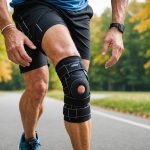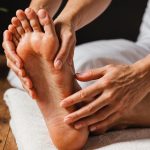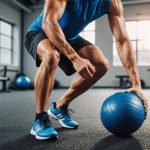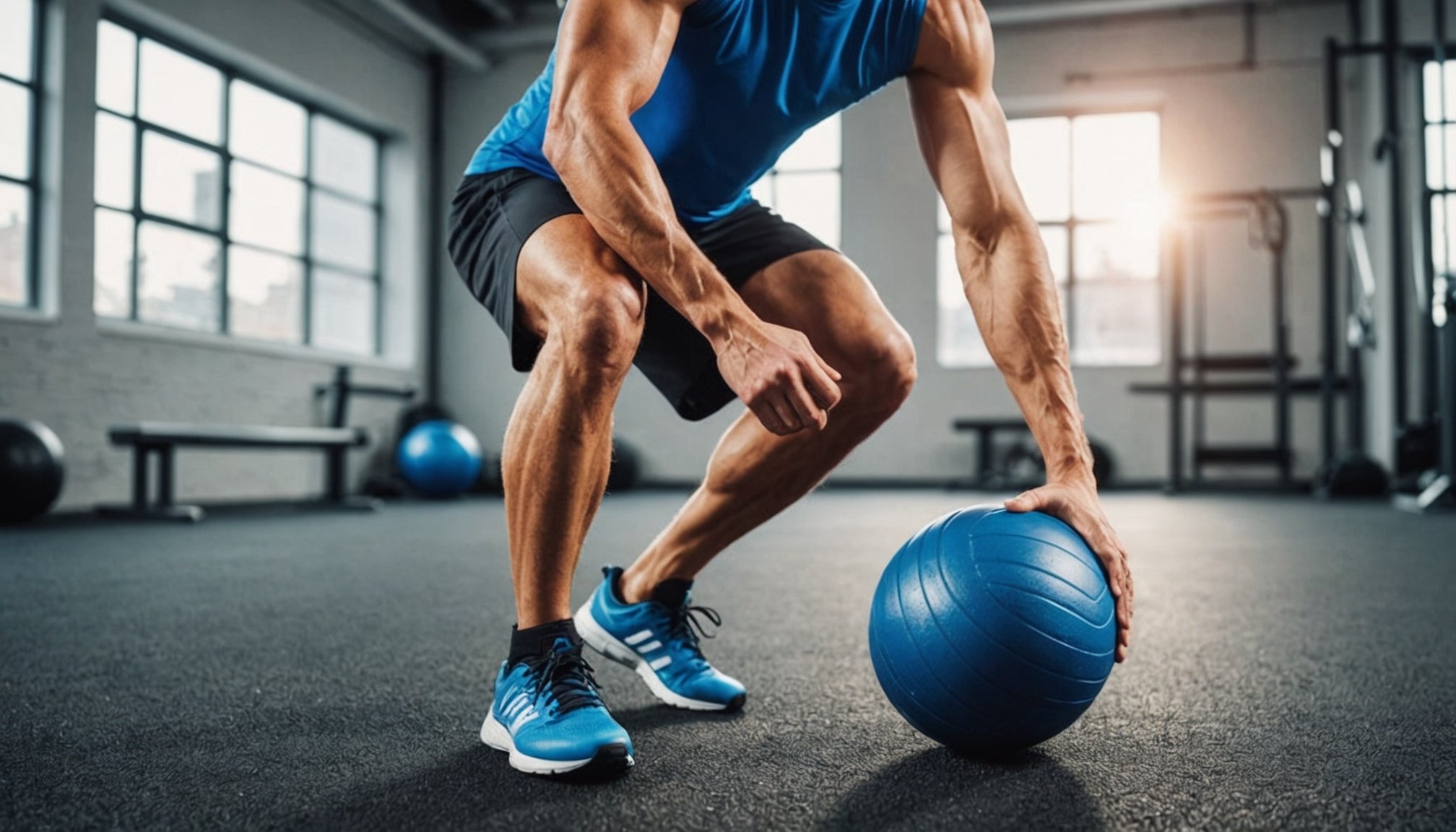Discover the Top Exercises to Heal Your Torn ACL: Effective Rehabilitation Techniques
If you’ve suffered a torn ACL (Anterior Cruciate Ligament), the road to recovery can be long and challenging, but with the right exercises and rehabilitation techniques, you can strengthen your knee, reduce pain, and eventually return to your favorite sports and activities. Here’s a comprehensive guide to help you navigate the rehabilitation process.
Understanding ACL Injuries
Before diving into the exercises, it’s crucial to understand what an ACL injury entails. The ACL is a critical ligament in the knee joint that provides stability and support. When it’s torn, it can cause significant pain, instability, and difficulty in performing everyday activities, let alone sports.
Also to discover : Top Herbal Teas That Boost Digestive Wellness: Discover the Best Options for Your Gut Health!
“An ACL injury is a serious setback for any athlete or individual who enjoys physical activity. However, with proper rehabilitation, it’s possible to regain full function and return to pre-injury levels,” says Dr. Etienne Cavaignac, a renowned orthopedic surgeon specializing in ACL reconstruction.
Pre-Surgery and Immediate Post-Surgery Rehabilitation
Strengthening and Range of Motion Exercises
Before and after ACL surgery, physical therapy plays a vital role in your recovery. Here are some key exercises to focus on:
This might interest you : Top Hypoallergenic Dog Breeds Ideal for Allergy Sufferers: Find Your Perfect Pup!
- Quadriceps and Hamstrings Strengthening: Strengthening the muscles around your knee is essential for stability and support. Exercises like straight leg raises, hamstring curls, and quadriceps sets can be done even before surgery to prepare your leg for the upcoming rehabilitation process.
- Range of Motion (ROM) Exercises: ROM exercises help maintain and improve the flexibility of your knee joint. Simple movements like bending and straightening your knee, as well as using a stationary bike, can be very beneficial.
Dynamic Warm-Up and Prevention Exercises
To prevent further injuries and enhance recovery, incorporating dynamic warm-up and prevention exercises is crucial:
- Dynamic Warm-Up: This includes exercises like leg swings, lunges, and calf raises. These help increase blood flow and prepare your muscles for more intense activities.
- ACL Prevention Exercises: Exercises such as single-leg squats, balance boards, and plyometric training can help strengthen the muscles around your knee and improve stability, reducing the risk of future ACL injuries.
Post-Surgery Rehabilitation Phases
The rehabilitation process after ACL surgery is typically divided into several phases, each with specific goals and exercises.
Phase 1: Immediate Post-Surgery (0-2 Weeks)
- Pain Management and Swelling Reduction: The initial focus is on managing pain and reducing swelling. This can be achieved through rest, ice, compression, and elevation (RICE) and the use of pain medications.
- Basic Mobility: Gentle exercises like straight leg raises, ankle pumps, and toe wiggles help maintain basic mobility and prevent stiffness.
Phase 2: Strengthening and Range of Motion (2-6 Weeks)
- Progressive Strengthening: As pain subsides, you can progress to more intense strengthening exercises such as leg press, leg extensions, and leg curls.
- Advanced ROM Exercises: Continue to improve your knee’s range of motion with deeper knee bends and straightening exercises.
Phase 3: Functional Training (6-12 Weeks)
- Functional Exercises: This phase involves exercises that mimic daily activities and sports-specific movements, such as squats, lunges, and agility drills.
- Balance and Proprioception: Using balance boards or BOSU balls can help improve your balance and proprioception (the ability to sense the position and movement of your body).
Detailed Exercise List
Here is a detailed list of exercises you can incorporate into your ACL rehabilitation program:
Phase 1: Immediate Post-Surgery (0-2 Weeks)
- Straight Leg Raise: Lift your leg 6-8 inches off the bed, keeping it straight, and hold for 5 seconds before lowering it back down.
- Ankle Pumps: Move your foot up and down to improve circulation.
- Toe Wiggles: Wiggle your toes to maintain ankle mobility.
Phase 2: Strengthening and Range of Motion (2-6 Weeks)
- Leg Press: Use a leg press machine to strengthen your quadriceps, hamstrings, and glutes.
- Leg Extensions: Isolate your quadriceps with leg extension exercises.
- Leg Curls: Strengthen your hamstrings with leg curl exercises.
- Deep Knee Bends: Gradually increase the depth of your knee bends to improve ROM.
Phase 3: Functional Training (6-12 Weeks)
- Squats: Perform bodyweight or weighted squats to strengthen your entire leg.
- Lunges: Practice walking lunges or stationary lunges to improve balance and strength.
- Agility Drills: Incorporate shuttle runs, cone drills, and other agility exercises to enhance your functional ability.
- Balance Training: Use balance boards or BOSU balls to improve your balance and proprioception.
Additional Rehabilitation Techniques
Electrical Stimulation
Electrical stimulation (e-stim) can be a valuable tool in your rehabilitation. It helps stimulate muscle contractions, which can be particularly useful in the early stages of recovery when voluntary muscle contractions may be painful or difficult.
“Electrical stimulation can be a game-changer in the early phases of ACL rehab. It helps maintain muscle mass and strength when you’re unable to perform voluntary exercises,” notes a physical therapist specializing in sports injuries.
Flow Restriction Training
Flow restriction training, also known as blood flow restriction (BFR) training, involves using cuffs to restrict blood flow to the muscles. This technique can help increase muscle strength without the need for high-intensity exercises, which can be beneficial during the initial phases of recovery.
“BFR training is an innovative approach that allows patients to achieve significant strength gains with lower loads, reducing the stress on the knee joint,” explains Dr. Cavaignac.
Table: Comparison of Rehabilitation Phases
| Phase | Duration | Primary Goals | Key Exercises |
|---|---|---|---|
| Phase 1: Immediate Post-Surgery | 0-2 Weeks | Pain management, swelling reduction, basic mobility | Straight leg raises, ankle pumps, toe wiggles |
| Phase 2: Strengthening and Range of Motion | 2-6 Weeks | Progressive strengthening, advanced ROM exercises | Leg press, leg extensions, leg curls, deep knee bends |
| Phase 3: Functional Training | 6-12 Weeks | Functional exercises, balance and proprioception | Squats, lunges, agility drills, balance training |
Practical Insights and Actionable Advice
Consult a Physical Therapist
Working with a physical therapist is crucial for a successful ACL rehabilitation. They can tailor a rehabilitation program to your specific needs and ensure you’re performing exercises correctly to avoid further injury.
“Having a physical therapist guide you through the rehabilitation process can make a significant difference in your recovery. They provide personalized feedback and adjustments to your exercise routine,” advises a sports medicine specialist.
Listen to Your Body
It’s essential to listen to your body and not push through pain. If you experience any pain or discomfort during exercises, stop immediately and consult with your healthcare provider.
“Pain is a signal that something is wrong. Always prioritize your body’s signals and adjust your exercises accordingly,” emphasizes Dr. Cavaignac.
Stay Consistent
Consistency is key in ACL rehabilitation. Regularly performing your exercises and adhering to your rehabilitation plan will help you achieve the best possible outcomes.
“Consistency in your rehabilitation routine is vital. It’s better to perform exercises regularly than to try to cram all your rehab into one or two days a week,” advises a physical therapist.
Recovering from a torn ACL requires patience, dedication, and the right approach. By understanding the different phases of rehabilitation, incorporating a variety of exercises, and utilizing additional techniques like electrical stimulation and flow restriction training, you can optimize your recovery and return to your active lifestyle.
Remember, every individual’s recovery is unique, so it’s important to work closely with healthcare professionals to tailor a rehabilitation program that meets your specific needs. With the right mindset and support, you can heal your ACL effectively and get back to enjoying the sports and activities you love.











